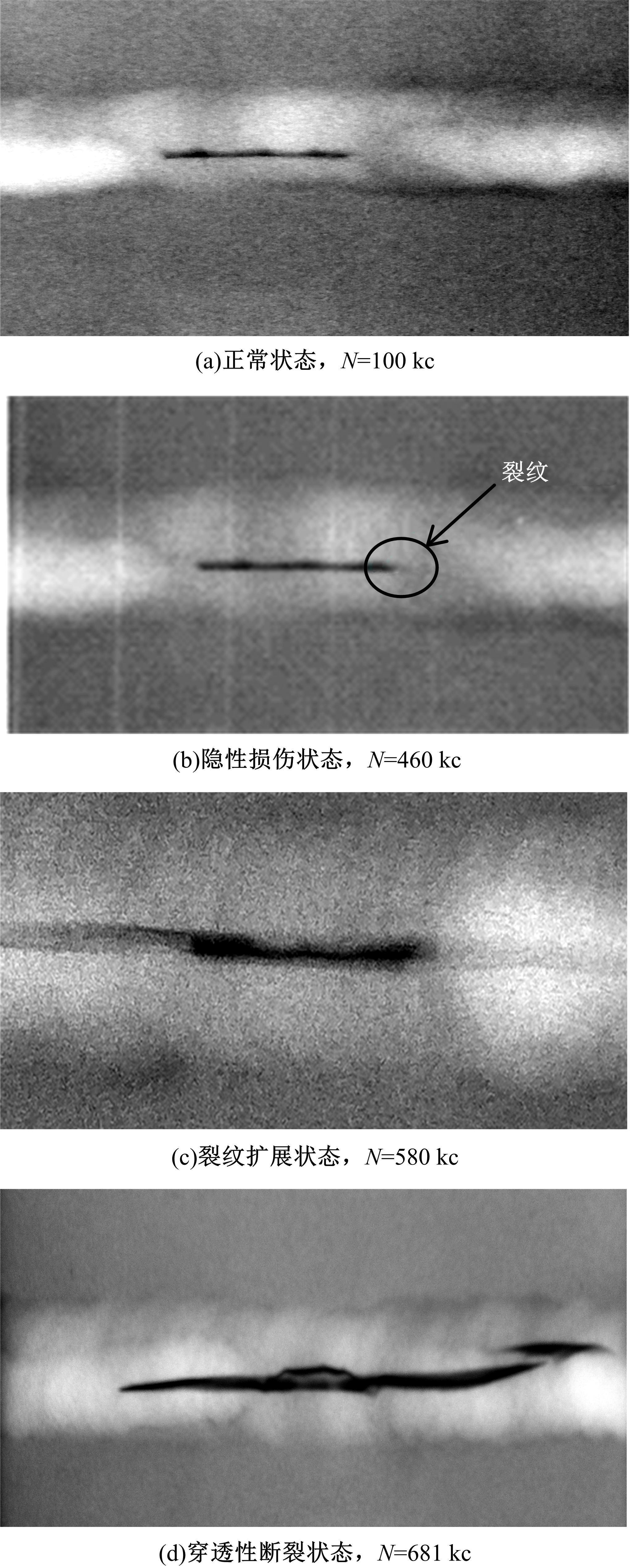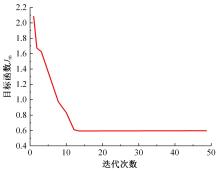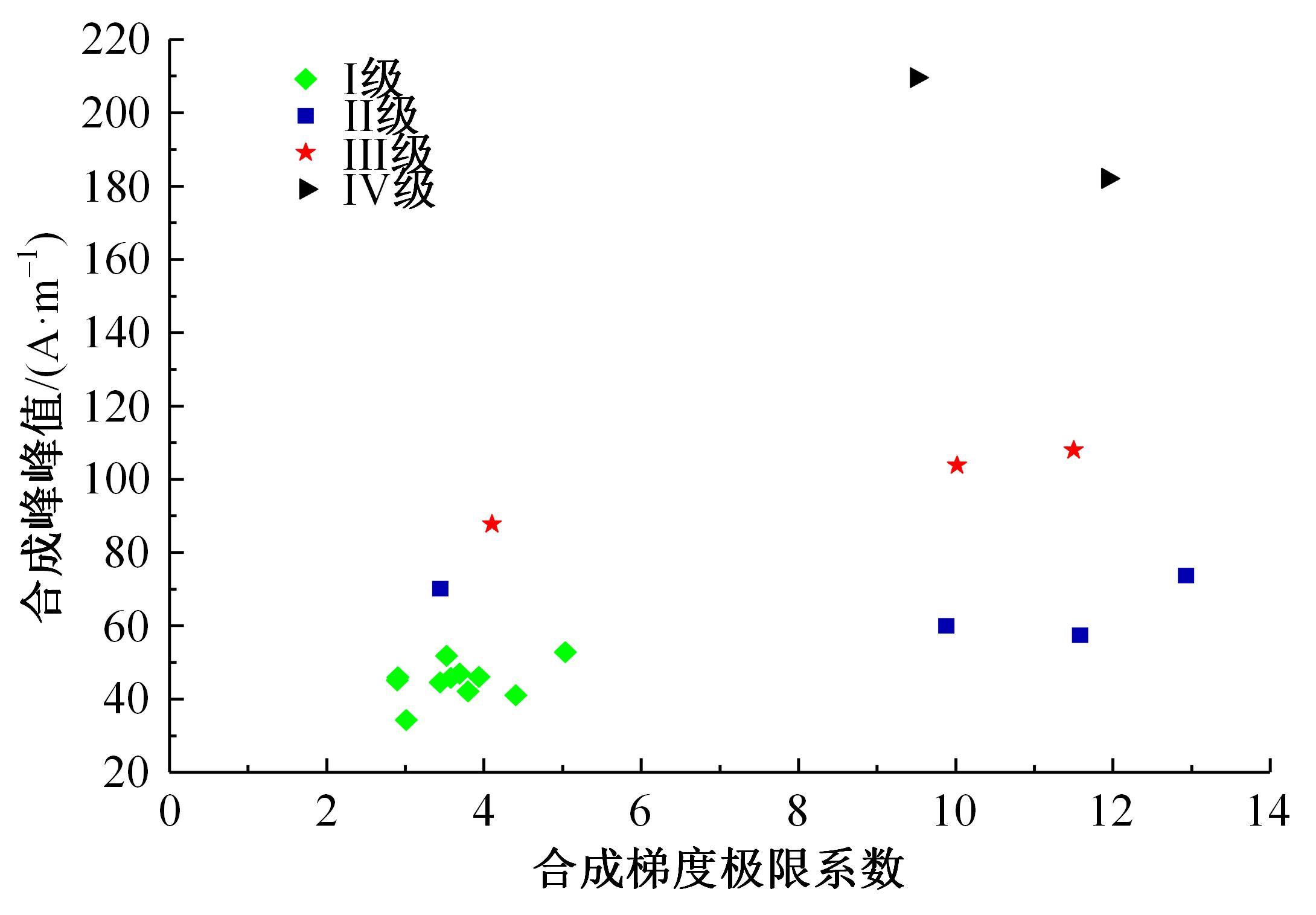Journal of Jilin University(Engineering and Technology Edition) ›› 2022, Vol. 52 ›› Issue (3): 525-532.doi: 10.13229/j.cnki.jdxbgxb20200849
Quantitative metal magnetic memory classification model of weld grades based on particle swarm optimization fuzzy C⁃means
Hai-yan XING( ),Chao LIU,Cheng XU,Yu-huan CHEN,Song-hong-ze WANG
),Chao LIU,Cheng XU,Yu-huan CHEN,Song-hong-ze WANG
- School of Mechanical Science and Engineering,Northeast Petroleum University,Daqing 163318,China
CLC Number:
- TH13
| 1 | , 焊缝无损检测·超声检测技术、检测等级和评定 [S]. |
| 2 | Dubov A A. Study of metal properties using metal magnetic memory method[C]∥7th European Conference on Non-destructive Testing, Copenhagen,1997:920-927. |
| 3 | Doubov A A. Diagnostics of metal items and equipment by means of metal magnetic memory [C]∥Proceedings of the CHSNDT 7th Conference on NDT and International Research Symposium, Shantou, China, 1999: 287-293. |
| 4 | Dubov A A. A study of metal properties using the method of magnetic memory[J]. Metal Science and Heat Treatment, 1998, 39(9): 35-39. |
| 5 | 邸新杰, 李午申, 白世武, 等. 焊接裂纹的金属磁记忆定量化评价研究[J]. 材料工程, 2006,50(7): 56-60. |
| Di Xin-jie, Li Wu-shen, Bai Shi-wu, et al. Quantitative evaluation study on metal magnetic memory of welding cracks[J]. Journal of Materials Engineering, 2006, 50(7): 56-60. | |
| 6 | 张军, 王彪, 计秉玉. 基于小波变换的套管金属磁记忆检测信号处理[J]. 石油学报, 2006, 27(2): 137-140. |
| Zhang Jun, Wang Biao, Ji Bing-yu. Signal processingfor metal magnetic memory testing of borehole casing based on wavelet transform[J]. Acta Petrolei Sinica,2006, 27(2): 137-140. | |
| 7 | 张军, 王彪, 肖余之. 磁记忆与小波变换相结合的井下套管应力集中早期诊断方法[J]. 吉林大学学报: 工学版, 2007, 37(2): 469-473. |
| Zhang Jun, Wang Biao, Xiao Yu-zhi. Early diagnosis for the stress concentration zone of borehole casing pipe by metal magnetic memory and wavelet transform[J]. Journal of Jilin University(Engineering and Technology Edition), 2007, 37(2): 469-473. | |
| 8 | 刘昌奎, 陶春虎, 陈星, 等. 金属磁记忆检测技术定量评估构件疲劳损伤研究[J]. 材料工程, 2009, 56(8): 33-37. |
| Liu Chang-kui, Tao Chun-hu, Chen Xing, et al. Research on quantitative assessment of fatigue damage bymetal magnetic memory methods[J]. Journal of Materials Engineering, 2009, 56(8): 33-37. | |
| 9 | 张伟, 黄卫民. 基于种群分区的多策略自适应多目标粒子群算法[J/OL]. [2020-09-30]. |
| 10 | 高云龙, 王志豪, 潘金艳, 等. 基于自适应松弛的鲁棒模糊C均值聚类算法[J]. 电子与信息学报, 2020, 42(7):1774-1781. |
| Gao Yun-long, Wang Zhi-hao, Pan Jin-yan, et al. Robust fuzzy C-means based on adaptive relaxation[J]. Journal of Electronics & Information Technology, 2020, 42(7): 1774-1781. | |
| 11 | 周世波, 徐维祥, 徐良坤. 融合密度峰值和空间邻域信息的FCM聚类算法[J]. 仪器仪表学报, 2019, 40(4):137-144. |
| Zhou Shi-bo, Xu Wei-xiang, Xu Liang-kun. ImprovedFCM algorithm based on density peaks and spatial neighborhood information[J]. Chinese Journal of Scientific Instrumen, 2019, 40(4): 137-144. | |
| 12 | 周世波, 唐基宏, 熊振南. 基于优化模糊C均值算法的锚泊船聚集特性[J]. 交通运输工程学报, 2019, 19(6): 137-148. |
| Zhou Shi-bo, Tang Ji-hong, Xiong Zhen-nan. Aggregation characteristics of anchored vessels based on optimized FCM algorithm[J]. Journal of Traffic and Transportation Engineering, 2019, 19(6): 137-148. | |
| 13 | 贾亚飞, 朱永利, 高佳程, 等. 基于样本加权FCM聚类的未知类别局部放电信号识别[J]. 电力自动化设备, 2018, 38(12): 107-112. |
| Jia Ya-fei, Zhu Yong-li, Gao Jia-cheng, et al. Recognition of unknown partial discharge signals based on sample-weighted FCM clustering[J]. Electric Power Automation Equipment, 2018, 38(12): 107-112. | |
| 14 | 易方. 基于ANSYS的管道磁记忆检测技术仿真研究[J].化工机械, 2014, 41(2): 207-210. |
| Yi Fang, Simulation research of pipeline mmm testing technology based on ANSYS[J]. Chemical Engineering & Machinery, 2014, 41(2): 207-210. | |
| 15 | 刘书俊, 蒋明, 张伟明, 等. 基于BP神经网络的磁记忆检测管道缺陷研究[J]. 化工自动化及仪表, 2016, 43(3): 240-243. |
| Liu Shu-jun, Jiang Ming, Zhang Wei-ming, et al. Study on pipeline defect inspection with magnetic memory testing technology based on bp neural network[J]. Control and Instruments in Chemical Industry, 2016, 43(3): 240-243. | |
| 16 | 邢海燕, 葛桦, 李思岐, 等. 基于模糊隶属度最大似然估计的焊缝隐性缺陷磁记忆信号识别[J]. 吉林大学学报: 工学版, 2017, 47(6): 1854-1860. |
| Xing Hai-yan, Ge Hua, Li Si-qi, et al. Hidden defect metal magnetic memory identification for welded joints based on fuzzy membership and maximum likelihood estimation. [J]. Journal of Jilin University(Engineering and Technology Edition), 2017, 47(6): 1854-1860. | |
| 17 | 邢海燕, 喻正帅, 李雪峰, 等. 基于模糊c均值聚类算法的焊缝缺陷等级磁记忆定量识别[J]. 压力容器, 2018, 35(6):57-63. |
| Xing Hai-yan, Yu Zheng-shuai, Li Xue-feng, et al. Quantitative metal magnetic memory identification of weld defect levels based on fuzzy c-means clusering algorithmt[J]. Pressure Vessel Technology, 2018, 35(6): 57-63. | |
| 18 | . 承压设备无损检测 [S]. |
| 19 | Bezdek J C. Pattern Recognition with Fuzzy Objective Function Algorithms[M]. Boston, MA:Springer, 1981. |
| [1] | Wei LUO,Bo LU,Fei CHEN,Teng MA. Fault diagnosis method of NC turret based on PSO⁃SVM and time sequence [J]. Journal of Jilin University(Engineering and Technology Edition), 2022, 52(2): 392-399. |
| [2] | Chang-qing DU,Xi-liang CAO,Biao HE,Wei-qun REN. Parameters optimization of dual clutch transmission based on hybrid particle swarm optimization [J]. Journal of Jilin University(Engineering and Technology Edition), 2020, 50(5): 1556-1564. |
| [3] | Fang-wu MA,Li HAN,Liang WU,Jin-hang LI,Long-fan YANG. Damping optimization of heavy⁃loaded anti⁃vibration platform based on genetic algorithm and particle swarm algorithm [J]. Journal of Jilin University(Engineering and Technology Edition), 2020, 50(5): 1608-1616. |
| [4] | Xiang-jun YU,Yuan-hui HUAI,Xue-fei LI,De-wu WANG,An YU. Shoveling trajectory planning method for wheel loader based on kriging and particle swarm optimization [J]. Journal of Jilin University(Engineering and Technology Edition), 2020, 50(2): 437-444. |
| [5] | Shun-fu JIN,Xiu-chen QIE,Hai-xing WU,Zhan-qiang HUO. Clustered virtual machine allocation strategy in cloud computing based on new type of sleep-mode and performance optimization [J]. Journal of Jilin University(Engineering and Technology Edition), 2020, 50(1): 237-246. |
| [6] | Hong⁃zhi WANG,Fang⁃da JIANG,Ming⁃yue ZHOU. Power allocation of cognitive radio system based on genetic particle swarm optimization [J]. Journal of Jilin University(Engineering and Technology Edition), 2019, 49(4): 1363-1368. |
| [7] | Yuan-ning LIU,Shuai LIU,Xiao-dong ZHU,Guang HUO,Tong DING,Kuo ZHANG,Xue JIANG,Shu-jun GUO,Qi-xian ZHANG. Iris secondary recognition based on decision particle swarm optimization and stable texture [J]. Journal of Jilin University(Engineering and Technology Edition), 2019, 49(4): 1329-1338. |
| [8] | Kai XU,Zhi⁃gang CHEN,Jing⁃hua ZHAO,Lu DAI,Feng LI. Layout design method of star sensor based on particle swarm optimization algorithm [J]. Journal of Jilin University(Engineering and Technology Edition), 2019, 49(3): 972-978. |
| [9] | ZHAO Dong,SUN Ming-yu,ZHU Jin-long,YU Fan-hua,LIU Guang-jie,CHEN Hui-ling. Improved moth-flame optimization method based on combination of particle swarm optimization and simplex method [J]. Journal of Jilin University(Engineering and Technology Edition), 2018, 48(6): 1867-1872. |
| [10] | LIU Yuan-ning, LIU Shuai, ZHU Xiao-dong, CHEN Yi-hao, ZHENG Shao-ge, SHEN Chun-zhuang. LOG operator and adaptive optimization Gabor filtering for iris recognition [J]. Journal of Jilin University(Engineering and Technology Edition), 2018, 48(5): 1606-1613. |
| [11] | LIU Fu, LAN Xu-teng, HOU Tao, KANG Bing, LIU Yun, LIN Cai-xia. Metagenomic clustering method based on k-mer frequency optimization [J]. Journal of Jilin University(Engineering and Technology Edition), 2018, 48(5): 1593-1599. |
| [12] | ZANG Guo-shuai, SUN Li-jun. Method based on inertial point for setting depth to rigid layer [J]. 吉林大学学报(工学版), 2018, 48(4): 1037-1044. |
| [13] | HUANG Hui, FENG Xi-an, WEI Yan, XU Chi, CHEN Hui-ling. An intelligent system based on enhanced kernel extreme learning machine for choosing the second major [J]. 吉林大学学报(工学版), 2018, 48(4): 1224-1230. |
| [14] | XING Hai-yan, GE Hua, LI Si-qi, YANG Wen-guang, SUN Xiao-jun. Hidden defect metal magnetic memory identification for welded joints based on fuzzy membership and maximum likelihood estimation [J]. 吉林大学学报(工学版), 2017, 47(6): 1854-1860. |
| [15] | LIU Ying, ZHANG Kai, YU Xiang-jun. Multi-objective optimization of hydrostatic bearing of hollow shaft based on surrogate model [J]. 吉林大学学报(工学版), 2017, 47(4): 1130-1137. |
|
||









